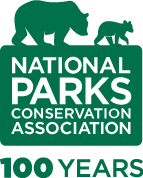A Century of Impact
Honoring Hallowed Ground

Pickett’s Charge, Devil’s Den, Cemetery Ridge — the names evoke the gravity of what was at stake when Confederate and Union forces met at Gettysburg, locked in brutal combat to determine the future of our nation. The 6,000 acres at Gettysburg National Military Park in Gettysburg, Pennsylvania, were pivotal in shaping American history as we know it — and continue to teach principles so important that thousands were willing to give their lives to defend them.

The Battle of Gettysburg, fought over the first three days of July 1863, was one of the most crucial battles of the Civil War — and the most costly. The conflict saw the largest number of casualties of the entire war, with more than 51,000 soldiers killed, captured, wounded or missing. The cemetery where many of these soldiers were laid to rest was also the site of one of the most famous speeches in U.S. history, President Abraham Lincoln’s Gettysburg Address, which in just 272 words honored the fallen and redefined the purpose of the war.
Lincoln urged his audience:
…to be here dedicated to the great task remaining before us — that from these honored dead we take increased devotion to that cause for which they gave the last full measure of devotion … that this nation, under God, shall have a new birth of freedom — and that government of the people, by the people, for the people, shall not perish from the earth.
More than 150 years later, Gettysburg remains the place where visitors can remember and reflect on both the freeing of 4 million people from slavery and a recommitment to a democratic government by and for all people, despite the many struggles to come.
Yet even this hallowed ground has faced numerous problems. Imagine:
- A 307-foot-high observation tower on private land that loomed over the park.
- Utility lines lacing the sky and a motel welcoming overnight guests on the very fields of Pickett’s Charge.
- The National Park Service’s largest collection of Civil War artifacts quietly moldering in the visitor center’s basement.
- A rare 19th century painting — the huge Gettysburg Cyclorama — slowly deteriorating in a flat-roofed building.
- Key battlefield sight lines obscured by decades of plant growth.
How could this happen? Over the years, short-sighted decision-making and a lack of National Park Service funding resulted in a deterioration of Gettysburg’s historic character.
But then, in the mid-1990s, the National Park Service began the process of updating its 20-year management plan. Three years of almost 60 controversial public meetings began.
NPCA’s regional director flew to Pennsylvania from her Boston office to participate in almost all of those meetings. She was at Gettysburg so often that, when Holiday Inn was rehabbing its local hotel, they called her and asked if she had any recommendations for them, given her frequent stays.
It was an incredible commitment that paid off. In 1999, the National Park Service adopted a clear management directive to return the battlefield to its 1863 appearance.
NPCA then pivoted to defending that decision, lobbying on Capitol Hill to fund key aspects of the plan, raising awareness in the media, and building public support for executing controversial elements of the plan.
Fast-forward to today.
Visitors now experience a park that indeed evokes 1863:
- Significant modern intrusions, including the tower, many of the utility lines, the outdated visitor center and Cyclorama buildings, trees and vegetation, and even the motel have been removed and the landscape rehabilitated.
- A LEED gold-certified visitor center opened in 2008 that tucks into the landscape amid lush native plants and includes a museum showcasing many of the artifacts that had previously been in storage.
- The beautifully restored Cyclorama painting is installed in a theater that evokes the sights, sounds and horror of July 1863.
NPCA’s work in Gettysburg isn’t done. In recent years, we’ve contested not one, not two, but three proposals to build casinos within cannon range of the park boundary, all of which advocates thankfully helped defeat. In 2014, NPCA was instrumental in lobbying Congress to annex lands at the foot of Big Round Top and a historic train station that had served as a field hospital during the battle as well as the location where Lincoln arrived the night before giving his historic address. And NPCA continues to fight for the congressional funding Park Service staff need to preserve and interpret its important history.
Today a visitor to Gettysburg can imagine the sights and sounds of the July 1863 battle and feel the weight of President Lincoln’s impassioned words without having to imagine away many modern intrusions — letting us honor and reflect on the sacrifices people made here more than 150 years ago to support “a new birth of freedom” for our young nation.
Make a tax-deductible gift today to provide a brighter future for our national parks and the millions of Americans who enjoy them.
Donate Now
